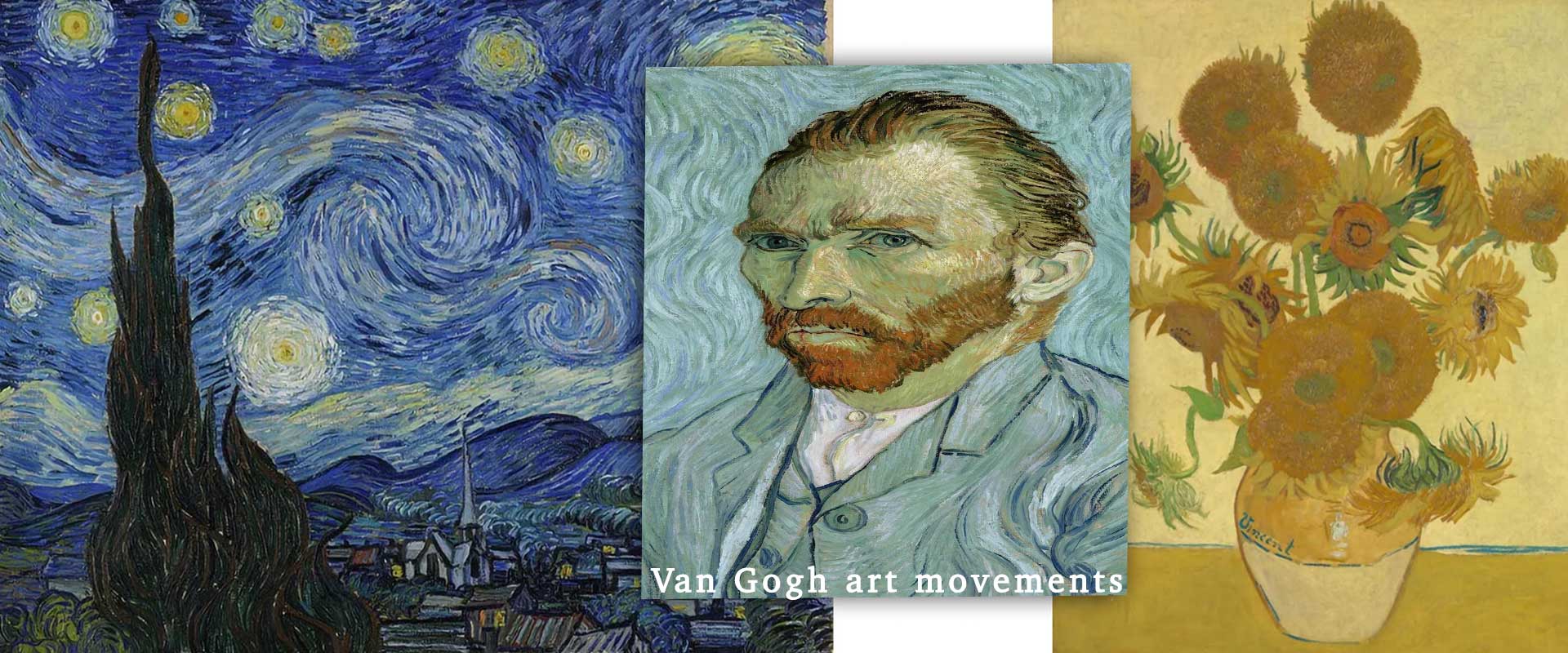Vincent van Gogh is often described as a Post-Impressionist master, but his work is more than just one label. His career traces a fascinating journey through several art movements, mirroring major shifts in the way art was created, seen, and felt. From dark, earthy tones to swirling skies filled with emotion, Van Gogh’s evolving style offers a window into the changing world of 19th-century art.
To truly understand modern art, it helps to understand Van Gogh—not just as a brilliant individual, but as an artist deeply influenced by and contributing to major artistic movements. This article explores how Van Gogh’s work embodies and expands on movements like Realism, Impressionism, and Post-Impressionism, and what that reveals about his role in the history of art.
Realism: Van Gogh’s Humble Beginnings
Van Gogh’s early works were heavily influenced by Realism, an art movement focused on portraying the working class and everyday life with honesty and humility.
Between 1881 and 1885, Van Gogh lived in rural Dutch towns like Nuenen, where he observed and painted peasant life. These works reflect the influence of Jean-François Millet, a French Realist whom Van Gogh admired greatly.
Key Characteristics of Van Gogh’s Realist Period
- Dark, earthy color palette
- Peasant subjects, like farmers, weavers, and laborers
- Somber lighting and minimal idealization
- Themes of poverty, work, and dignity
Notable work: The Potato Eaters (1885)
This gritty painting of a peasant family sharing a meal is considered his first major piece. It’s raw, unpolished, and deeply human—capturing the essence of Realism.
Impressionism: A Colorful Turning Point
When Van Gogh moved to Paris in 1886, everything changed. He was introduced to Impressionists like Monet, Renoir, and Pissarro—artists focused on capturing fleeting moments, light, and atmosphere. Their use of vibrant colors and loose brushwork had a transformative effect on Van Gogh’s technique.
How Impressionism Shaped Van Gogh’s Style
- Adoption of lighter, brighter colors
- Short, visible brushstrokes
- Painting everyday scenes, especially outdoors
- Study of light and seasonal changes
While Van Gogh never considered himself a true Impressionist, the influence is clear in his Paris-period works, including flower still lifes, city scenes, and portraits of friends.
Explore Pierre-Auguste Renoir wall prints
Post-Impressionism: Finding His Own Voice
Van Gogh’s time in Arles (1888–1889) marks his entry into Post-Impressionism, a movement that built upon Impressionist color and form but emphasized emotion, symbolism, and structure.
Here, Van Gogh moved beyond capturing what he saw and focused on expressing what he felt.
Defining Features of Van Gogh’s Post-Impressionist Phase
- Use of bold, symbolic color (yellow for joy, blue for isolation)
- Thick, impasto brushwork for texture and movement
- Swirling, rhythmic compositions
- Emotional and spiritual undertones
Famous Post-Impressionist works: Sunflowers, Bedroom in Arles, Café Terrace at Night, The Starry Night
These paintings embody the inner turbulence and beauty that define Post-Impressionism—and Van Gogh’s unique ability to paint the unseen.
Expressionism: A Movement He Preceded
Though Van Gogh died in 1890, years before Expressionism took root, his influence on the movement is undeniable. Expressionist artists like Edvard Munch and Egon Schiele admired his bold colors, distorted forms, and emotional power.
Van Gogh’s later paintings are less about the external world and more about the internal landscape—something Expressionists would take even further in the 20th century.
Why Van Gogh Matters to Art History
Van Gogh’s art isn’t just timeless—it’s a map. His work traces the transitions between Realism, Impressionism, and Post-Impressionism, and helps us understand the shift from observation to emotion in modern painting.
His legacy also illustrates the freedom of artistic self-expression. He didn’t conform to rules or movements—he explored, experimented, and found his own voice. In doing so, he laid the groundwork for modern art as we know it today.
Conclusion
Understanding Van Gogh’s place in art history is like watching the story of modern art unfold on canvas. He began with Realism, was transformed by Impressionism, and ultimately became one of the defining figures of Post-Impressionism. His emotional intensity, bold use of color, and visionary technique inspired movements far beyond his lifetime.
If you want to experience this artistic evolution for yourself, explore our curated collection of Vincent van Gogh wall art prints—perfect for anyone who wants to bring the soul of modern art into their home.
FAQs
What art movements influenced Van Gogh?
Van Gogh was influenced by Realism, Impressionism, and Post-Impressionism. He also helped shape Expressionism through his emotional style.
Was Van Gogh part of the Impressionist movement?
He was never officially part of the Impressionist group but was deeply inspired by their techniques and color palette during his time in Paris.
What makes Van Gogh’s style unique?
His emotional brushwork, symbolic use of color, and expressive forms set him apart from other artists of his time.
How did Van Gogh contribute to Post-Impressionism?
He expanded on Impressionist ideas by using color and form to express emotion and psychological depth, influencing later movements like Expressionism.
What are Van Gogh’s most famous Post-Impressionist works?
The Starry Night, Sunflowers, Bedroom in Arles, and Irises are some of his most iconic Post-Impressionist pieces.





